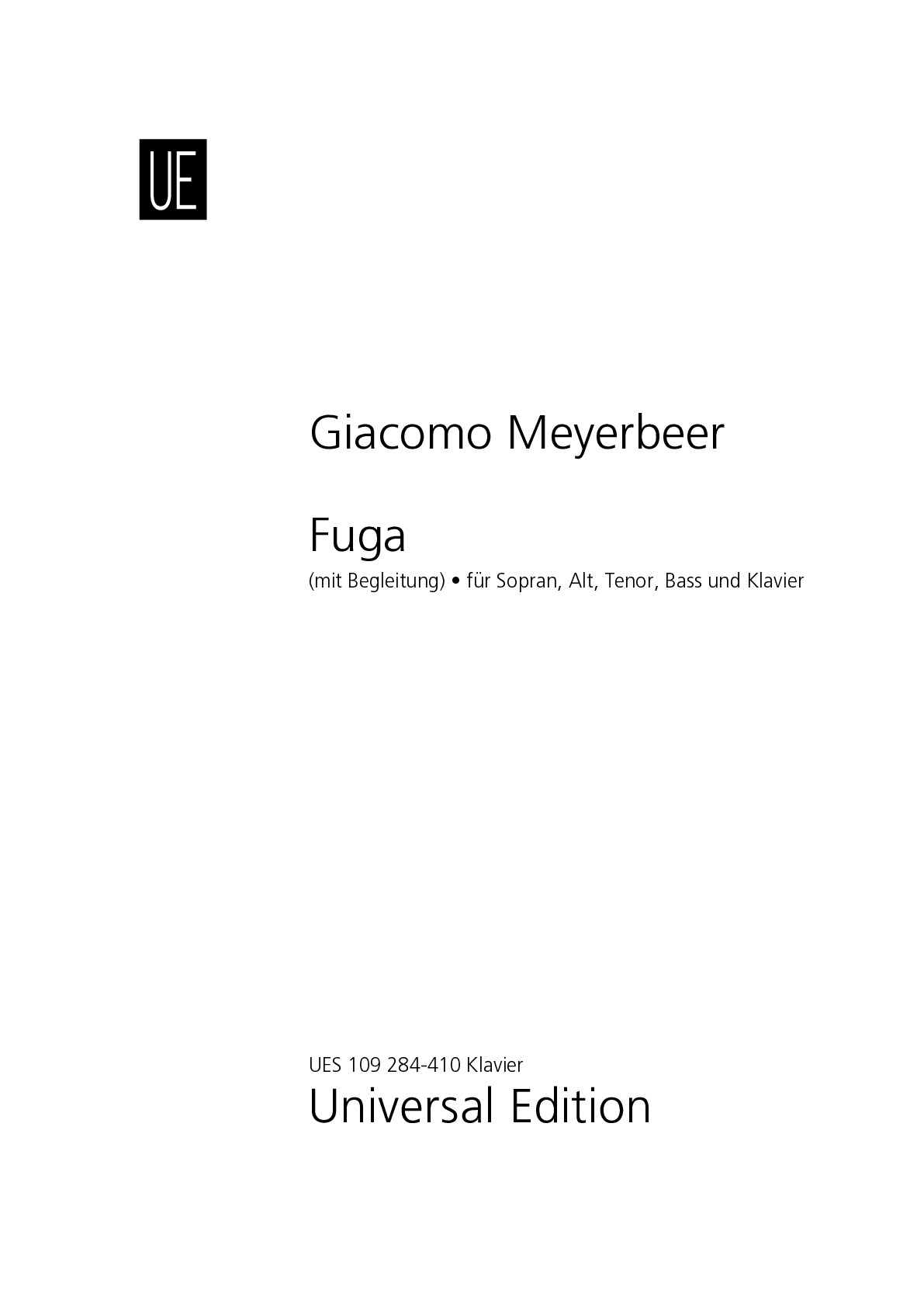.png)
Digital edition
immediately available as PDF
€14.95
Payments:
Shipping:
Giacomo Meyerbeer
Fuga
UESD109284-410
Type: digitale Noten
Format: 210 x 297 mm
Pages: 16
Digital edition
immediately available as PDF
€14.95
Payments:
Shipping:
Description
Giacomo Meyerbeer’s forgotten treasures
Edited by musicians for musicians
Director: Andrea Chudak
In 1809, the eighteen-year-old composer was given the task by his teacher from Berlin, the Royal Kapellmeister and composer Bernhard Anselm Weber (1764-1821), to work on the compositional genre of the fugue. Meyerbeer then composed the present work, a vocal fugue to a psalm verse translated by Moses Mendelssohn. His teacher then also sent it to his own teacher Georg Josef Vogler (1749-1814), one of the leading music theorists of the time. Vogler was strongly impressed by the eighteen-year-old's fugue; he then even used the work in his book "System für den Fugenbau als Einleitung zur harmonischen Gesang-Verbindungs-Lehre" (System for fugue composition as an introduction to the harmonic singing connection doctrine) to demonstrate his teachings. In this way Meyerbeer grew to enjoy his lessons with Vogler. There he met Carl Maria von Weber as a fellow student, with whom he was to have a lifelong friendship.
So far, no evidence of performances of this work in the 19th century has been found. Possibly, in addition to its status as a "student fugue," a small detail of Mendelssohn's translation of the Psalm stood in the way, in which the Hebrew Adonai Tzevaot (usually translated as "Lord of hosts") is rendered as "Lord of the universe“. In this, one can discern an echo of the Jewish Enlightenment, of which Meyerbeer's hometown of Berlin was the center. Outside of educated and progressive environments of some large cities, the German cultural view was conservative and anti-Jewish; the Mendelssohn word "Lord of the Universe" may have been considered unbecoming, especially since the young composer was also Jewish himself.
From measure 74 to 82, the bass vocal line in the original manuscript contains a notated pedal point on the dominant note A. This organ note supports the interwoven voices until the dominant cadential closure in measure 82, effectively building up the energy of movement. The question arises regarding the intended musical execution. It is likely that the organ played the bass line or perhaps even additional voices to support the vocal line intonationally. This corresponds to a practice still commonly used today—the pedal point is easy to implement in this way. For this edition (Fugue with accompaniment), we have notated the accompanying part separately for easier practical use, adjusted it to common piano practice, and shifted the pedal point accordingly.
The original manuscript "Fugue of 1809" was discovered in 2021 by the Berliner Meyerbeer researcher, Thomas Kliche in a scrapbook belonging to the violin virtuoso and conductor Andreas Romberg (1767-1821).
A premiere recording of this work is available with "Meyerbeer: vocal" (BM319320).
This work was out of print and considered lost.
Andrea Chudak
More information
Type: digitale Noten
Format: 210 x 297 mm
Pages: 16

